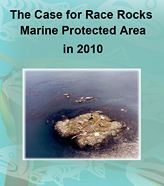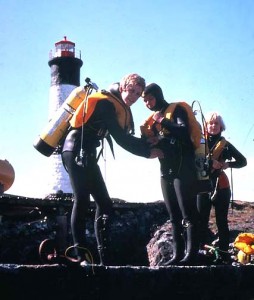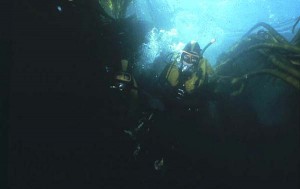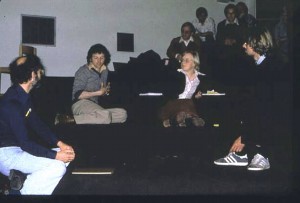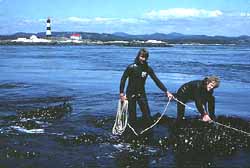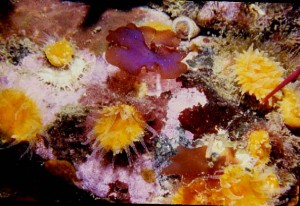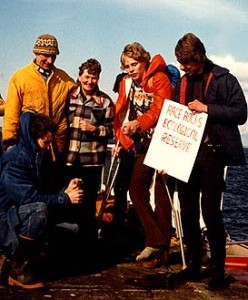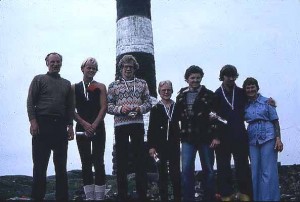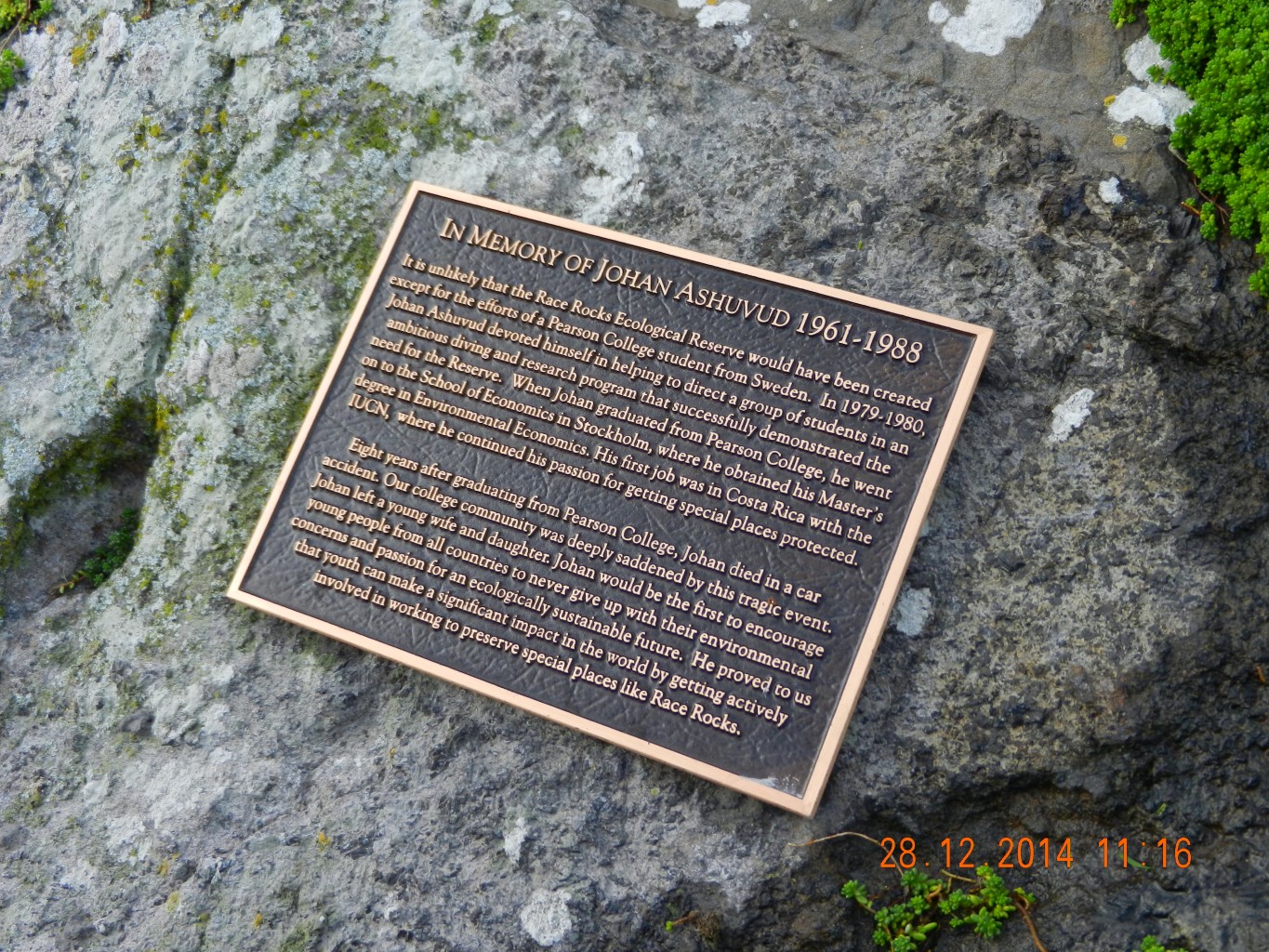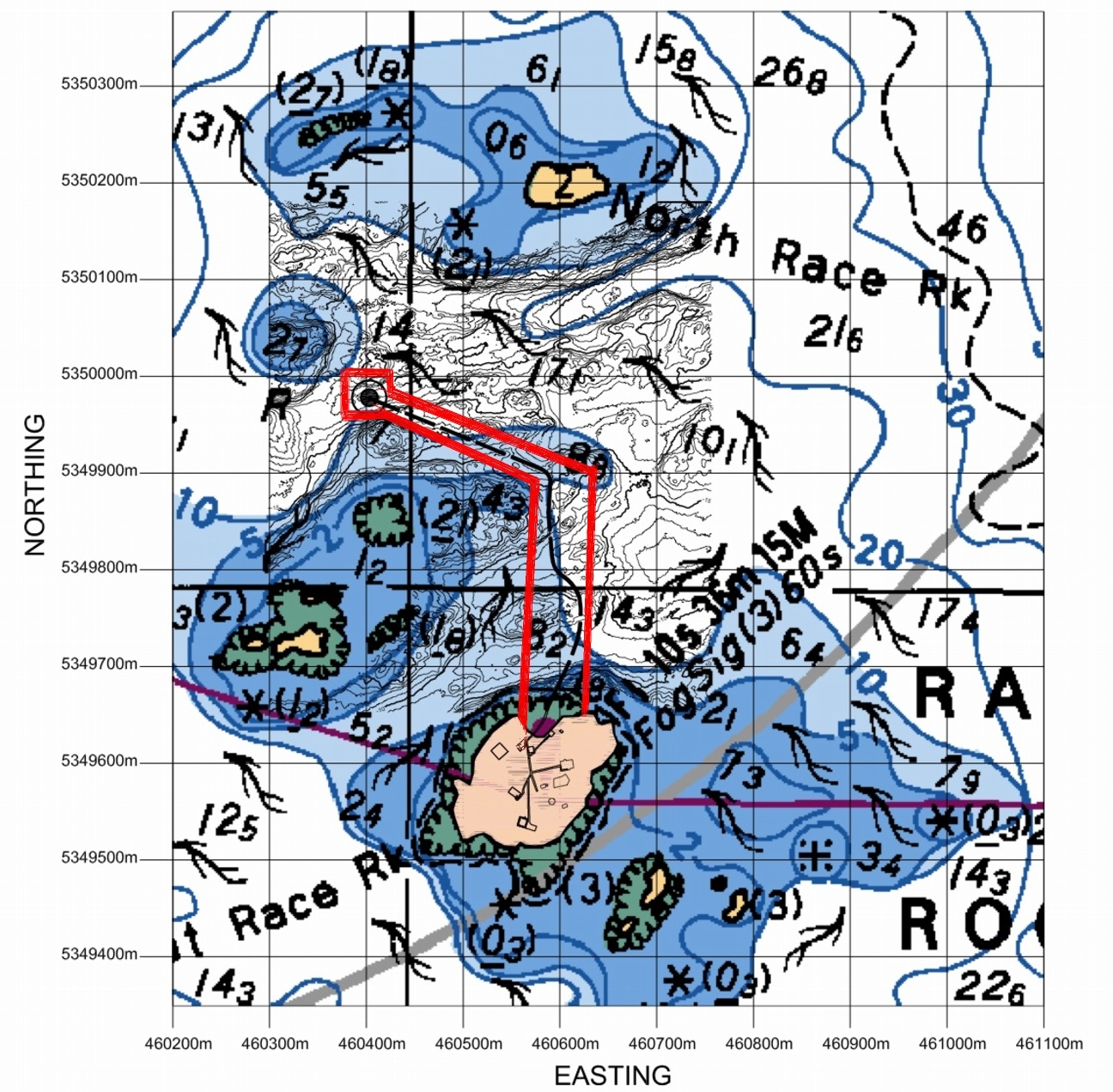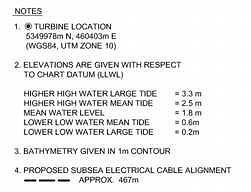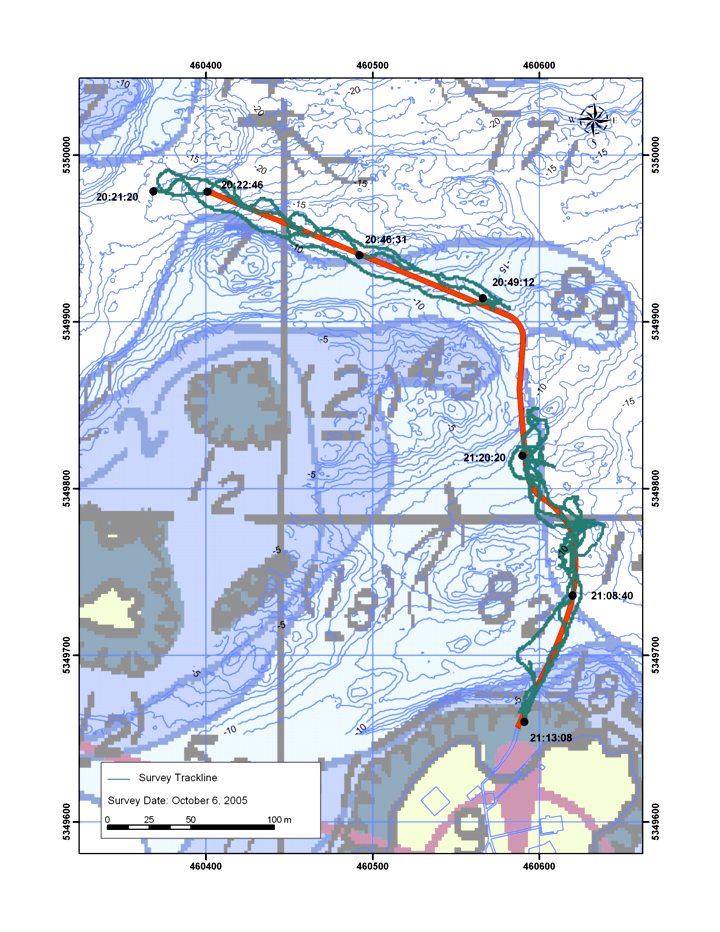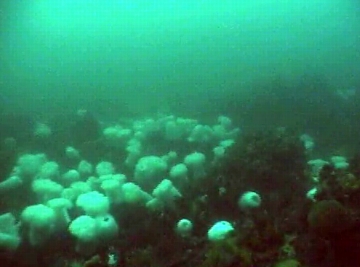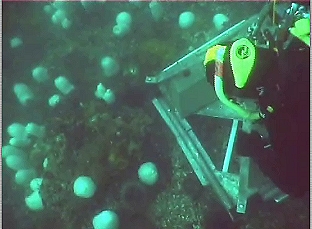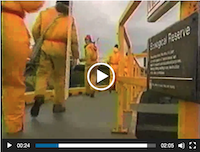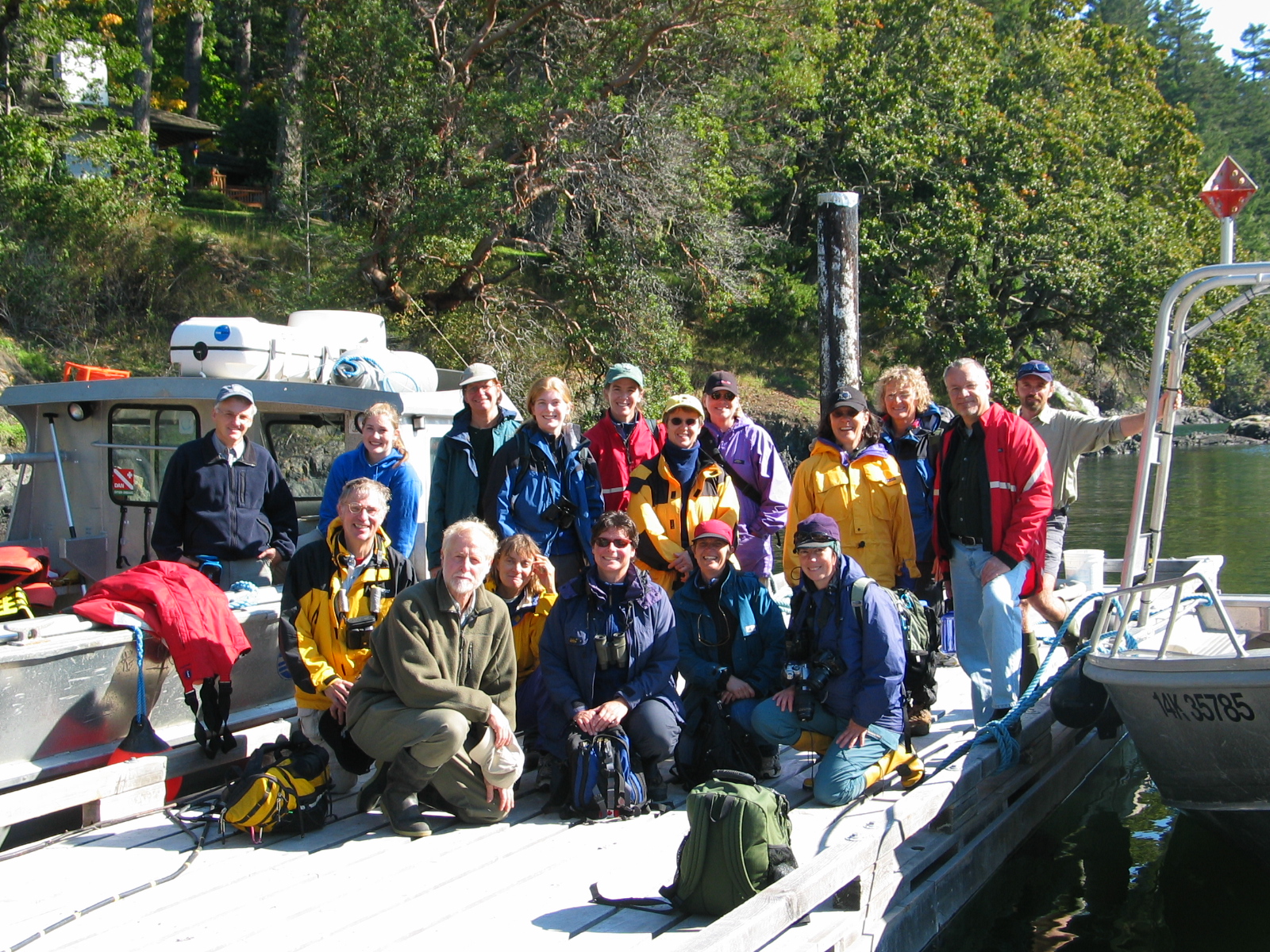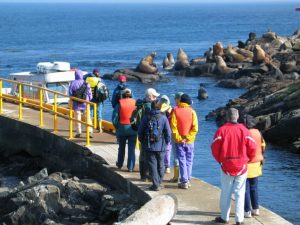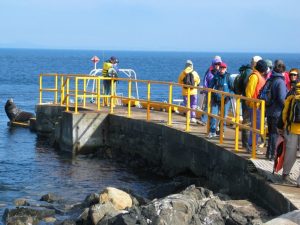File No: 85700-35/0210206
BC Parks Impact Assessment Process
Level 1, Preliminary Screen Report
(See Users Guide, pp. 9 to 12)
Name of Action: Expand generator shed for battery storage for Current Turbine Project
Proponent: Lester B Pearson College
Review Date(s): March 17,05 Page: 1of 3
A. Issues and Environmental Components
- List any issues of concern that have been or may be raised by BC Parks, other government agencies, First Nations, or the public.
Impacts of expanding sidewalk footprint. Impact on nesting birds.
ie: Construction should take place when birds aren’t nesting.
No habitat loss should take place.
Impacts that could potentially be damaging to other wildlife and plant communities as a result of demolition/construction activities.
- Identify any geographic “hotspots” at or close to the proposed action (e.g., areas of high use, concentrations of facilities, wilderness conservation zones, unique landscape features).
The proposed footprint of the engine room expansion is represented below. Note the sidewalk extension is made more clear in following diagrams.
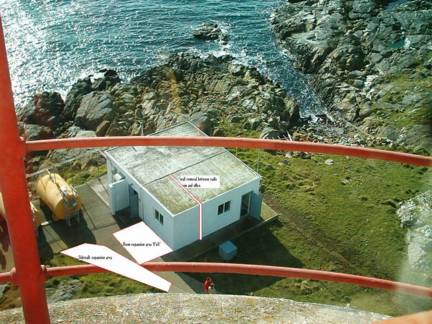
This would accommodate the floor plan represented following:
The outside wall with the double door in the technical diagram is the part that would occupy the small white square above.

This would accommodate the floor plan represented following:
The outside wall with the double door in the technicall diagram is the part that
would occupy the small white square above.
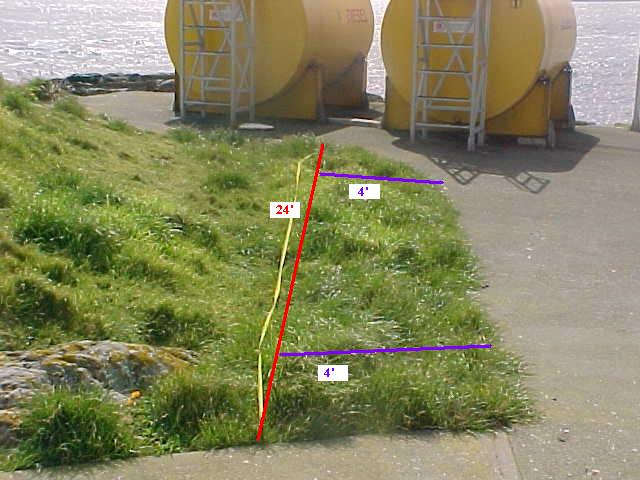
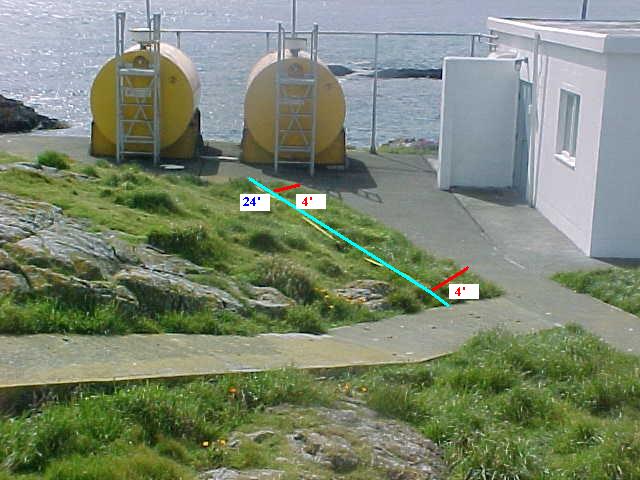
- Identify any important environmental, recreational, social or economic values in the area of the proposed action and/or the area surrounding the proposed action (e.g., rare or endangered species, hiking experience, midden site). Include a rationale as to why the value is considered important.
Ensure no endangered or rare plant species or other habitat is lost as a result of expansion of sidewalk. Reduce size to minimum needs.
This area has been surveyed on April 6 /05 by Pam Thuringer of Archipelago Marine and she has indicated there are no endangered plant species therein. Most of the grasses are introduced species, with a few invasive species. None of the rock outcrop up the slope is impacted by this extension.
“I have recommended that the sod that is lifted, should be transplanted to another area of the island, for instance to a corner of the top of the concrete covered cistern, which could support a grass community if adequate soil depth was restored, or other areas which currently have concrete which could be moved such as the “sidewalk to nowhere!” below, located by the boat shed. I think that restoration of this 17 by 4 foot area would be a suitable mitigation for the impacted area by the engine room, as it adds habitat in an area more suitable for nesting. ”
(Garry Fletcher)
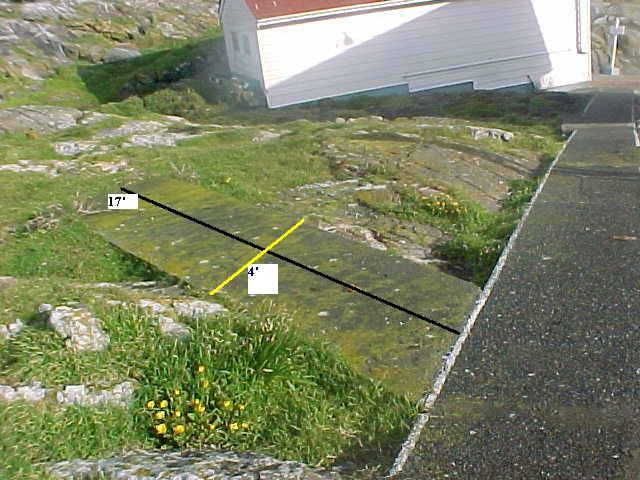
Preliminary Screen Checklist Page: 2of 3
Complete the following based on information available and/or the experience of BC Parks staff at the time of the review.
- BC Parks has a responsibility to comply with the following Acts and regulations. Indicate that the proposed action complies with the following: Done ( or N/A)
Park Act, Park Amendment Acts Yes
Ecological Reserve Act Yes
An order issued under the Environmental Land Use Act n/a
BC Environmental Assessment Act n/a
Waste Management Act n/aHeritage Conservation Act (i.e., Archaeological Impact Assessment Guidelines) n/a
Federal Fisheries Act (Department of Fisheries and Oceans) n/a
Other (specify):
Comments:
BC Parks should ensure that all actions comply with BC Parks policies. Indicate that the proposed action complies with the following: Done
Approved management plan or management direction statement (MDS)Yes
BC Protected Areas Strategy: Resource and Recreation Use Guidelines for Protected AreasYes BC Parks Policy including conservation and recreation goals (Striking the Balance) Yes
BC Parks Policies (specify):Eco reserves set aside for protection and research Yes
BC Parks ConservationProgramPolicies yes
BCParksAnnualManagementPlan (i.e.,valuesandtargets)n/a
Other (specify):
Comments:
Page:3 of 3 3.
Document which agencies /stakeholders that have been or should be notified and/or contacted: yes” Done ( or N/A)
Conservation Data Centre n/a Ministry of SRM (specify branch):
Ministry of Forests (i.e., Range Act) n/a
Ministry of Energy and Mines (Mineral Tenure Act) n/a
Ministry of Health Services n/a>
First Nations Yes
Agencies responsible for broader level plans (i.e., Regional District, LRMP) n/a
Other (specify):
Comments (include name and title of contact):
The proposed action is likely to result in the following impacts (check all that apply) Done
(U or N/A)
Adverse and permanent effects on the important conservation, recreation and/or cultural heritage values n/a
Adverse and permanent effects on the character and aesthetics of the protected area n/a
Adverse effects to endangered, threatened or vulnerable or regionally significant species, populations and habitats (i.e., red/blue-listed species/habitats, biogeoclimatic representation) U
Adverse effects to critical or geographically unique characteristics U
Adverse effects to public health and safety n/a
Adverse effects to traditional use of the area by First Nations n/a
Adverse effects to local communities n/a
Adverse effects to the recreational use or enjoyment of the park (regardless of the intended benefits of the proposed action) n/a
Economic implications, such as operating costs, that cannot be maintained over time n/a
A high level of controversy or public concern regarding the action n/a
Effects of the action, which when combined with the effects of other actions in the region, may result in cumulative impacts n/a
Implications which may be precedent-setting and should therefore be considered in the context of similar future actions n/a
Comments (use corresponding letters to refer to specific impacts listed above):
- Level 1 report should recommend appropriate times and methods for construction to ensure birds /wildlife impacts are kept to a minimum.
The window of work for the sidewalk construction will be in the next few weeks. It is scheduled to start on April 18, well before the onset of nesting in late May. We have given the end of April as a deadline for the sidewalk extension and any other on land work that may compromise the bird nesting habitat to be completed.
Concrete will be made on site from materials transported to the island.
Garry Fletcher and /or Chris Blondeau will be on site to oversee the environmental concerns and Brian Emmett and Pam Thuringer and staff of Archipelago Marine have been contracted to do an ongoing environmental assessment for the duration of the construction phase of the project during the next year.
- An on ground review of proposed sidewalk location and reduced sidewalk footprint recommended.
See photos above.

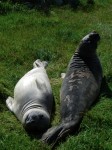
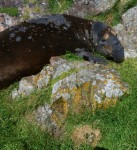
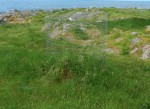
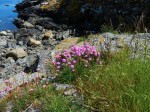
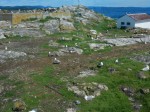
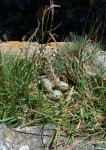
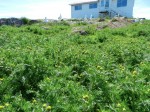
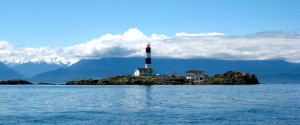
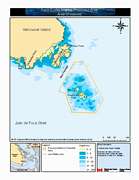 Proposed boundary areas
Proposed boundary areas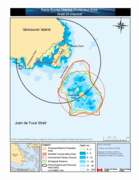 Proposed boundary areas detail
Proposed boundary areas detail